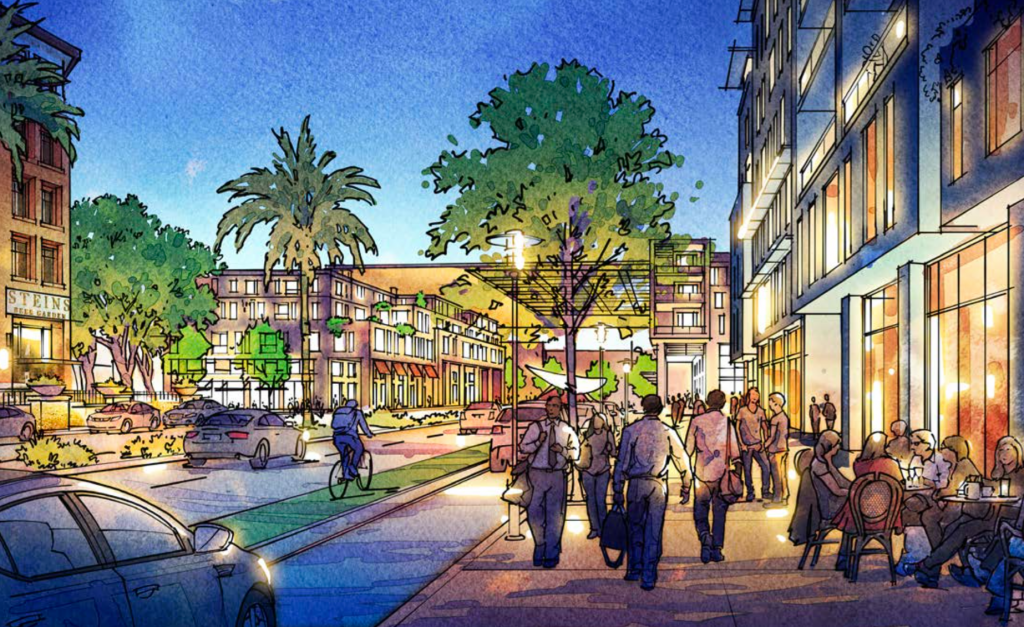This September, the City of Cupertino adopted its Vallco Town Center Specific Plan to guide development in a northern part of the city that abuts Santa Clara between Stevens Creek Boulevard and Interstate 280 in the vicinity of Vallco Parkway. The plan outlines the buildout of 2,923 housing units, 1.75 million square feet of office space, 400,000 square feet of commercial space and 191 hotel rooms.
In response to the environmental impact report for the plan, in August the City of Santa Clara officials sent a letter to Amy Chan, Cupertino’s interim City Manager, reiterating concerns from a previous letter that potential impacts on Santa Clara’s sewer system by the plan’s buildout needed to be evaluated. The concerns focus on the possibility that sewer flows generated by the plan area entering Santa Clara will exceed 13.8 million gallons per day, which is the maximum instantaneous rate of flow set in the agreement between the City of Santa Clara and the Cupertino Sanitation District.
“Because of these shortcomings in the evaluation of the sewer systems, it is difficult to fully assess the sewer conveyance capacity impacts and we believe that there could be substantial impacts to the [City of Santa Clara’s] sanitary sewer system in the event of full project build out,” the letter stated.
Santa Clara Public Works director Craig Mobeck said, “While the City of Cupertino didn’t send a direct response back to us, Cupertino issued some further clarifications at the City of Cupertino’s Sept. 18, 2018 City Council meeting as part of the CEQA process and approvals for the Vallco project. Those clarifications addressed the issues raised by Santa Clara for the time being. Cupertino City staff also mentioned these clarifications to Santa Clara City staff.
“The City will continue to proactively outreach and meet with the City of Cupertino to resolve any outstanding issues regarding the Vallco project. Additionally, the City of Santa Clara will continue to closely monitor developments underway in neighboring cities (including in Cupertino) that have the potential to affect Santa Clara,” continued Mobeck.
On Sept. 4, environmental consultants with David J. Powers & Associates addressed comments submitted by the City of Santa Clara regarding the plan after the public comment period for the environmental review document had passed.
In response to the stated expectation that sewer flows into Santa Clara will exceed 13.8 million gallons per day due to the new development, the consultants, in essence, disagreed with the suggested way that the peak flow would be measured. Sewer flows can be measured on an instantaneous or continuous basis and the consultants disagreed that the peak flow should be measured on an instantaneous basis.
“The most recent sewer flow information provided by the [Cupertino Sanitary District] does not indicate that the contractual limit of the Santa Clara sanitary sewer system is being exceeded or would be exceeded by development of the Specific Plan; therefore, no improvements to Santa Clara’s system are needed and no construction impacts are anticipated,” the consultants stated. “As part of the City’s plans for discretionary review for the Master Site Development Permit to implement the Specific Plan, additional calculations and sewer flow modeling will be performed based on the detailed development program for the project.”
